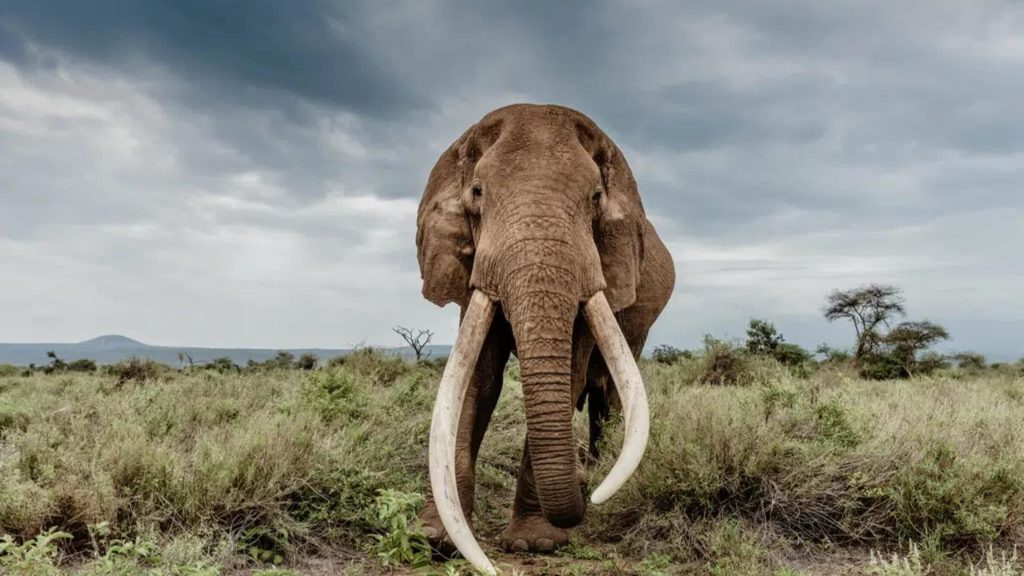Discovery of the Earliest Butchery of an Extinct Elephant in India – The Daily Galaxy –Great Discoveries Channel

Deep in the Kashmir Valley, archaeologists have uncovered a startling link between early humans and one of the largest land mammals to ever roam the Earth. Hidden beneath layers of ancient sediment, this discovery sheds light on survival strategies, advanced tool-making techniques, and a fascinating glimpse into the intelligence of our distant ancestors. But what exactly was found at this mysterious site? And how does it challenge everything we thought we knew about early human life in South Asia? Dive into the full story to unravel a 300,000-year-old mystery.Elephant fossils discovered in the Kashmir Valley have revealed a surprising connection between early humans and one of the largest land mammals of the prehistoric world. Excavations at the Pampore site uncovered not only the remains of these ancient giants but also a collection of sophisticated stone tools, suggesting a level of interaction that challenges previous assumptions. This remarkable find sheds new light on human survival strategies during the Middle Pleistocene and raises intriguing questions about the relationship between early hominins and their environment.Pampore Valley, located at the foot of the Himalayan mountains, has become a key archaeological site for understanding early human activity in South Asia. In 2000, elephant remains and stone tools were uncovered, marking the beginning of an ongoing investigation. The Karewa Group, the geological formation where these remains were found, is characterized by a complex stratigraphy made up of fluvial and lacustrine sediments from the Pleistocene, a period marked by major climatic and ecological shifts.The excavation revealed remains from at least three elephants belonging to the Palaeoloxodon genus, along with 87 stone tools. Among these, a remarkably complete skull stood out, offering valuable information about the evolution of these elephants and the behaviors of early humans.The tools found at Pampore, primarily flakes and blades, suggest an advanced understanding of core-preparation technology, a method of stone tool manufacture that enabled the production of more efficient implements. The fossils also showed signs of butchery, with bone flakes that indicate early humans were likely scavenging the carcasses for marrow, an important energy source.What makes this discovery even more fascinating is that the tools were made from basalt, a material not native to the area. This suggests that early hominins transported raw materials from distant locations before shaping them on-site. These behaviors point to a level of planning and resourcefulness that indicates significant cognitive development among these ancient humans.Dating the sediments of the Pampore site has proven to be a complex task. Using intra-crystalline protein decomposition in elephant enamel, researchers have suggested a Middle Pleistocene age for the site, placing the fossils at over 300,000 years old. This period, marked by fluctuating climates and evolving ecosystems, would have posed significant challenges for early humans, while also offering them opportunities to interact with local fauna.Fission track dating of the underlying ash layers helped constrain their age to around 2.4 million years, and further analyses, including paleomagnetic studies, refined the timeline, confirming the Pampore Member’s placement within the Middle Pleistocene.One of the most intriguing aspects of this discovery is that it challenges our previous understanding of early human behaviors in India. Prior to this, it was assumed that large animals were not exploited so early in this region. However, the elephant remains and associated tools suggest that early humans were using sophisticated strategies to exploit their environment, including large herbivores.This discovery supports the hypothesis that early humans in the region were capable of utilizing a variety of resources and adapting to changing environments. The fossils found at Pampore provide fresh insights into human mobility, material transport, and cognitive abilities during this time period.The fossils uncovered belong to Palaeoloxodon turkmenicus, an extinct species of elephant that featured intermediate traits between African ancestors and Eurasian descendants. These elephants were twice the size of modern African elephants and had a distinctive cranial morphology. The Pampore skull, the most complete specimen of its kind, offers a unique look into the evolution and dispersal of this genus.Pathological analysis of the skull revealed signs of chronic sinusitis, a condition that may have contributed to the animal’s death. While there is no direct evidence of hunting, such as embedded spear points, the proximity of tools and fragmented bones suggests a clear interaction between humans and these elephants. The possibility that the elephant became trapped in soft sediments near a river adds another layer of complexity to the story.The climatic and environmental changes occurring in the Kashmir Valley during the Pleistocene likely influenced the behaviors of both humans and animals. Periods of climatic stability, indicated by soil formation in the sediment layers, may have provided favorable conditions for human and animal activity. These stable intervals would have allowed humans to better exploit their environment, developing more sophisticated subsistence strategies.The presence of multiple elephants at the site suggests that the valley may have served as a migration corridor or a favorable habitat for large mammals. This abundance of resources could have attracted early humans, creating opportunities for interaction and the butchery of elephants. The discovery of bone flakes and tools adds to the growing body of evidence supporting the idea that early humans were skilled at exploiting their environment for survival.Got a reaction? Share your thoughts in the commentsEnjoyed this article? Subscribe to our free newsletter for engaging stories, exclusive content, and the latest news.Comment Save my name, email, and website in this browser for the next time I comment.
© 2024 | Daily Galaxy | All rights reserved
Source: https://dailygalaxy.com/2025/02/discovery-of-the-earliest-butchery-of-an-extinct-elephant-in-india/






